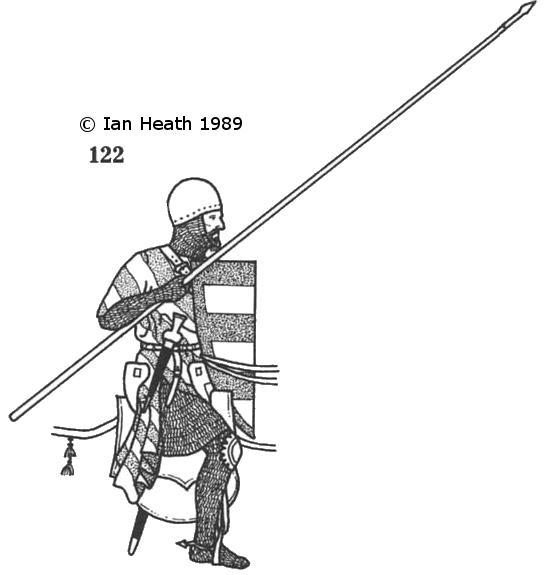
Try Amazon Fresh
HUNGARIAN KNIGHT, 13th CENTURY
An extract from Armies of Feudal Europe 1066-1300by Ian Heath
[Based on The Saint Ladislaus Legend in the Velka Lomnica Church]



122. HUNGARIAN KNIGHT, 13th CENTURY
The conversion of the Magyars by the Catholic rather than the Greek Orthodox Church inevitably resulted in Hungary coming within the European, rather than the Byzantine, sphere of influence, and the presence at the Hungarian court of German mercenary knights from an early date meant that it was German influence which prevailed in military matters (see page 42). The senior nobility associated with the king's court had already adopted German arms and armour by the beginning of this period, copying the equipment of the 'Saxon' mercenaries prevalent in the royal household, but elsewhere in the country native forms of armour such as that depicted in the last figure prevailed until the mid-12th century, when Otto of Freising tells us that rural Hungarian knights were just beginning to adopt the arms and tactics of the Germany mercenary companies. The Byzantine chronicler Constantine Manasses, writing in the first half of the 12th century, describes Hungarian knights as all having helmets, heavy armour, spears and corselets, while Niketas Choniates, in his account of the Battle of Semlin in 1167, records even heavier equipment: 'Not only were the warriors covered by corselets to the teeth, but their horses also had straps and plates of armour on their foreheads and breasts to protect them'.
The figure portrayed here, from church frescoes dating to the end of this period, depicts armour identical to that in use elsewhere in Europe at that time, comprising mail hauberk and chausses, the latter with plate poleyns attached, under a short-sleeved blue and white surcoat. Arms comprise dagger, sword and lance. Note his beard; in the earlier part of this period most Hungarians wore beards, but by the late-13th century many had adopted the Cuman custom of shaving the chin, including even King Ladislas IV himself, who was condemned by a papal legate for 'adopting Turkish weapons. - and shaving his beard.' (See also figure 86 in Armies of the Middle Ages, volume 2.) Interestingly this knight is depicted riding with short stirrups, another indication of lasting Asiatic influence.